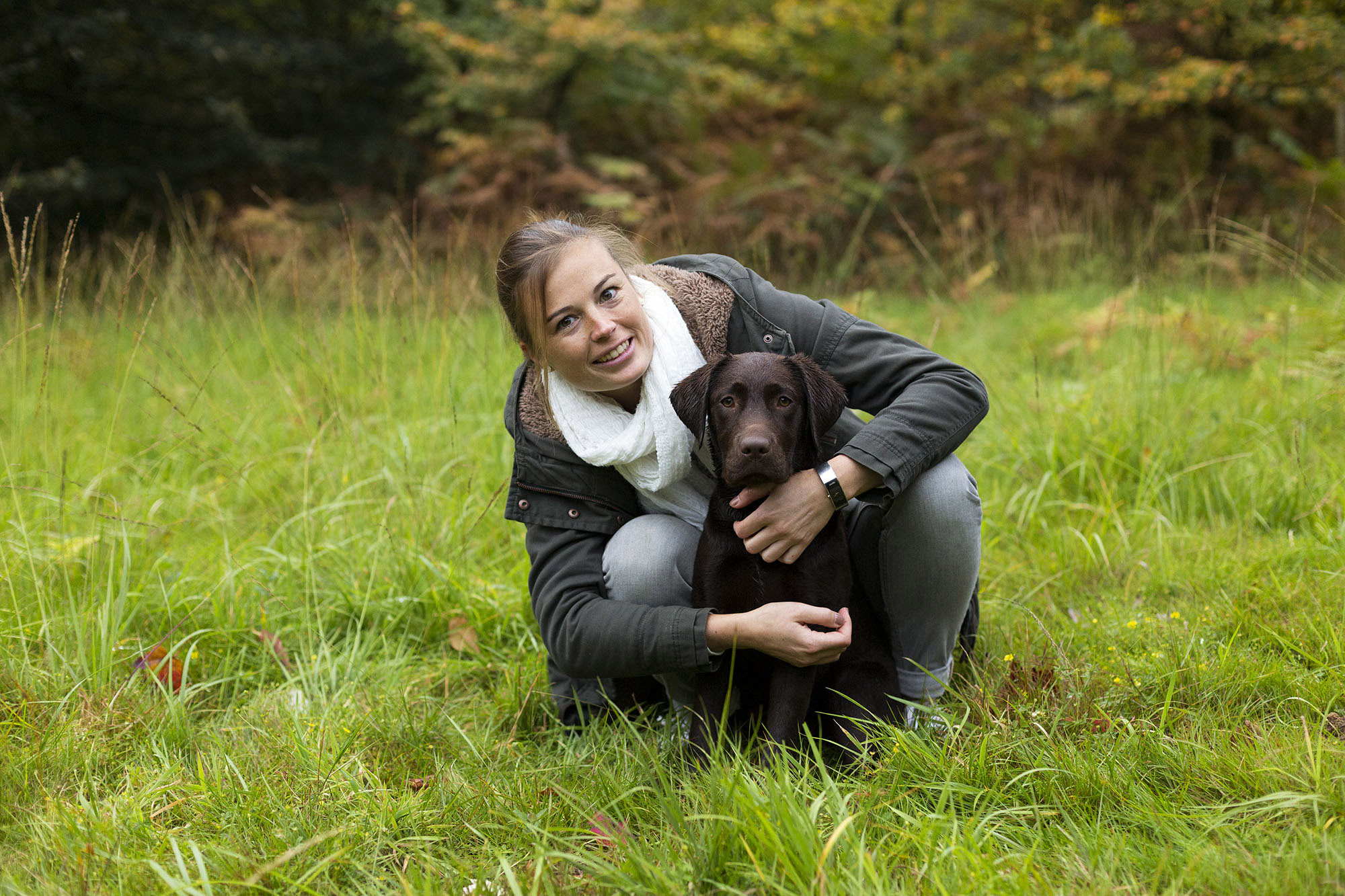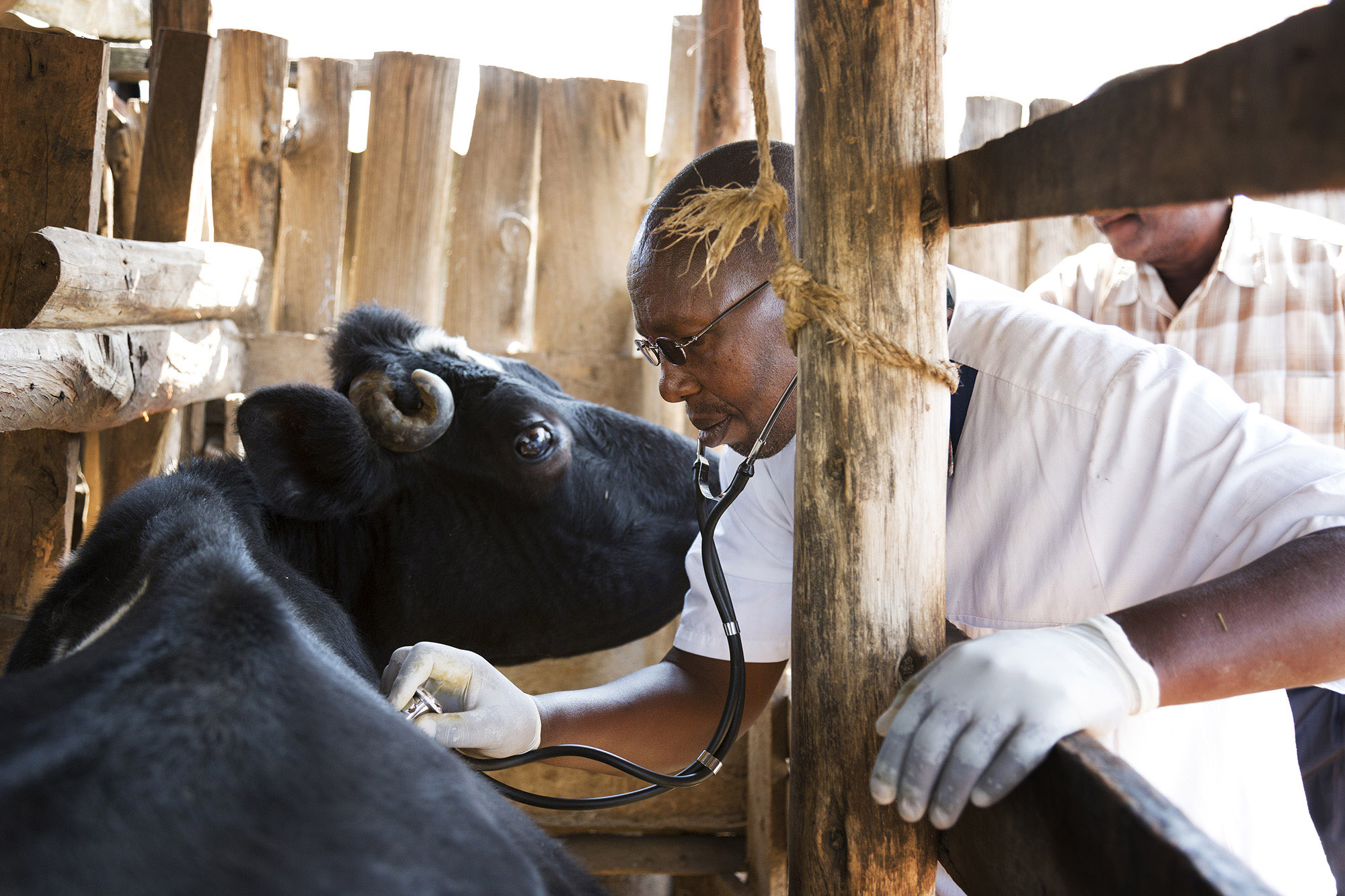Story at a glance
-
India's National Pride
Caring for dairy industry
-
From China to Belgium
United by passion for animals
-
Brazil's Generational Passion
Where animal health is a family business
-
Export Veterinarian
Seeing the world from down under
The iron gates of Dr. Shrawan Singh’s clinic yawn open, marking the start of a gruelling 13-hour day for him and his small team.
Over the next few hours, he’ll sees dozens of animals brought to his door for advice and treatment, before delivering a workshop on disease management and sustainable milk production to a rapt group of smallholders from neighboring farms.
Soon after noon, he’s out on the road, driving deep into the rolling, verdant hillscape of the Maharashta region in India. He carries with him his entire mobile clinic – a simple, red suitcase in which every last centimeter is packed with medicines to treat the cattle so essential to countless communities in the region.
I cannot explain it, but when I go to the fields, I get a lot of warmth from these animals. I can say I get touched by their problems, and when I treat a case, it gives me immense pleasure”
Shrawan Singh, Cattle veterinarianIf this sounds like a frenetic day to us, there’s no sign of it in Dr Singh’s calm, chatty demeanour. He says he followed his brother into the veterinary profession, but it soon became a passion all his own.
“I cannot explain it,” he says, “but when I go to the fields, I get a lot of warmth from these animals. I can say I get touched by their problems, and when I treat a case, it gives me immense pleasure.”
But Dr Sigh’s pride in his work isn’t only founded in animal wellbeing, he says. In a country where cattle occupy a very special status, the veterinarian’s role is an important one.
“At present, India is number one in milk production,” he says. “And that is a great achievement for us in the entire Indian veterinary fraternity.”
From China to Belgium
United by passion for animals
More than 3500 kilometers away in China, veterinarian Zhang Renna’s part in feeding one of the world’s largest populations is no small source of pride. She steps through a narrow hallway, peering through the observation windows that overlook this vast swine breeding facility.
Veterinary Director step on onto the floor of the vast facility; the sheer scale of the operation means the strictest biosecurity measures are observed.
She confidently conducts a small orchestra of colleagues on the other side of the glass, each of whom have been subject to extensive decontamination to protect the pigs from outside bacteria.
Renna’s work has helped rear the countless swine that underpin the nation’s vast food chain. But it was actually a relationship with a humble housecat that set her on a path of working with animals.
“The reason I’m doing what I do now is because when I was a child, I raised a pet cat and I loved it so much,” he explains.
“But suddenly one day, the cat got sick and died. There was no veterinarian in my small town but I always wanted to know how it happened. I hoped to become a veterinarian so that I can help more pets.”
It didn’t quite pan out that way, but Renna’s university major in animal husbandry led to a fulfilling career nonetheless.
For me, the welfare of animals is very important. Having healthy animals is very important to me, and every morning as I come into work I’m thinking: How can I improve the health of animals?.”
Sophia,Business Manager in Animal Health industry“I love my job very much – I always wanted to go back to my hometown to raise pigs after graduation.”
A childhood fascination translates very easily into an adult calling, it seems. Sophia leads the equine business for an animal health company half a world away in Belgium. With two enthusiastic pet owners as parents, she grew up with animals.
She may not be knee-deep in feed, but her enthusiasm for her work is just as evident as Renna’s.
“It’s very satisfying to work in the animal health sector,” she explains.
Brazil's Generational
Passion
Where animal health is a
family business
The parental influence looms large in Brazil, where the traditions of the past are writing the future for many. Farmers make a tough living in the Uberlandia region, yet the expectation that skills will be passed from father to son remains.
“No-one chooses to become a farmer,” explains veterinarian Flavio Luiz.
“It comes from the family; it’s already the father’s work and it gives continuity to the farm.”
His client, José Augusto Franco Vilela, is a case in point, having inherited a cattle farm and an entire way of life from his father. He speaks movingly about watching a boyhood spent watching his father and learning practices of the farm.
It’s a truly beautiful spot, where the immaculate order of the corral gives way to the big skies and wilder expanses of Uberlandia.
Today I have the pleasure of being here, in the corral, working, feeding the animals, selling the animals with the best results, and selling the animals with the most potential. I worked for many years in business, and this has always been my refuge.”
José Augusto Franco Vilela,FarmerWhile farming may have chosen him, rather than the other way around, José offers little complaint.
Perhaps unsurprisingly, Flavio also followed in the footsteps of his father.
“I chose to become a veterinarian because of my family, which was always very much involved in the field,” he says.
“My father went to the farm every weekend and I went with him. God willing, I’ll continue to work in this field for a long time.”
I find it really rewarding to work with the animals, and I get to work with people from totally different cultural backgrounds and travel the world and see lots of different sights.”
Renne Willis, VeterinarianSeeing the world from down under
Renee Willis grew up in a rural Australian town, where her mother and father were both veterinarians.
She also followed her parents into the profession, but while they were at the centre of their small community, Renee’s work as a live export vet takes her to every corner of the globe.
She monitors health and welfare aboard live export ships – an absolutely essential role in a food chain that traverses across entire continents.
“I oversee the handling of animals as they’re loaded on to ships throughout the export process while they’re at sea, and then monitor the unloading of these animals at their destination.”
She’s long mastered her early seasickness and loves her work.
Recent months have seen her visit southeast Asia, Turkey and Lebanon. On each trip, she paces the vast decks of these ships, checking each animal as they acclimatise to life at sea (“the animals have four legs, so they handle seasickness better than us”).
“I can reach these animals as many times a day as I like,” she says.
“I've got a well-stocked toolkit and good equipment with me. So I can really provide a high level of individual care.”
This individualised care and strict monitoring is absolutely essential in managing disease in a relatively confined space. Vaccination is a key component of the pre-export protocols, and treatment is carefully considered.
“We always treat each case individually; we won’t use blanket treatment and we always use environmental and management practices that can reduce the spread of infection.”
Her role is many thousands of miles away from Dr Singh’s but her sense of vocation is the same.
“It’s our ethical responsibility to ensure animals health and welfare standards are met to the best of our ability,” she says.
In all of these countries and communities, the lives of veterinarians, animals and those who depend upon them both are closely interwoven.
While you’d expect vets around the world to take pride in their care for their animals, it seems the care they provide to their communities – however international – is equally valuable.
Spotlight: A Mobile Veterinarian in Kenya
Kenya’s Rift Valley is considered the food basket of a nation in rapid growth. But this status has been under attack in recent years, as farmers have been battered by unpredictable weather, disease outbreaks and population pressures.
It isn’t just arable farmers who’ve been hit; the cattle farmers who provide dairy and food to this young, expanding population have had to contend with East Coast Fever (or ECF).
“ECF kills one cow every 30 seconds within the Eastern, Central, and Southern region of Africa,” explains Naphtali Githaka, a Nairobi-based researcher working on a vaccine.
“This amounts to about one million cattle annually, but these estimates date from the 1990s, so the impact on smallholders and the dairy sector could be even greater nowadays.”
The job of reaching these animals falls to Samuel Mathenge, whose white Nissan truck is a familiar sight amongst the corrugated steel and timber frames of these urban smallholdings.
A typical day will see him visiting dozens of animals, ducking between beams to check a pulse or administer an injection.
“I get phone calls for about 95 per cent of the animals I see, particularly cows,” he says.
“During the conversation, I’ll try to gather as much history as possible; when did the cow fall sick? What are the presenting conditions? Then when I get to the farm I have to build a rapport with the farmer, which is crucial.”
One such smallholder is Philip Ndung’u Kamunyu, whose animals make up about a quarter of his income. ‘I’m a family man and I have children in school, so I keep the cows as a source of income. I sell milk and I’ve opened a dairy next to where I have a bookshop.”
He’s also a farmer, whose crops are fed using the dung from his animals. He cannot speak highly enough of a vet who has offered constructive advice on managing disease and nutrition.
“Before Samuel came we had problems,” he says. “But he does not take any chances and he has made sure that I maintain the animals. If vaccination will keep my animals away from disease for about three years, then that’s a profit.”
From lab to land
Next storyOther stories
- A Lifetime of Mutual Care
- Health, Husbandry and Heritage
- Pride in Profession
- From Lab to Land
- The Long Walk towards Rabies Eradication
- Healthy Animals Drive Economic Growth
- Responsible use: the responsibility of us all
- Innovation for Sustainable Production
- Farming to feed a growing world
- Protecting Animals Protects People











![Veterinarian Holly Ludeman (above) calls animal medicines 'hugely important to the [Australian] livestock industry.' These tools help her 'massively reduce' illness amongst animals.](images/gallery/gallery_img_14.jpg)
